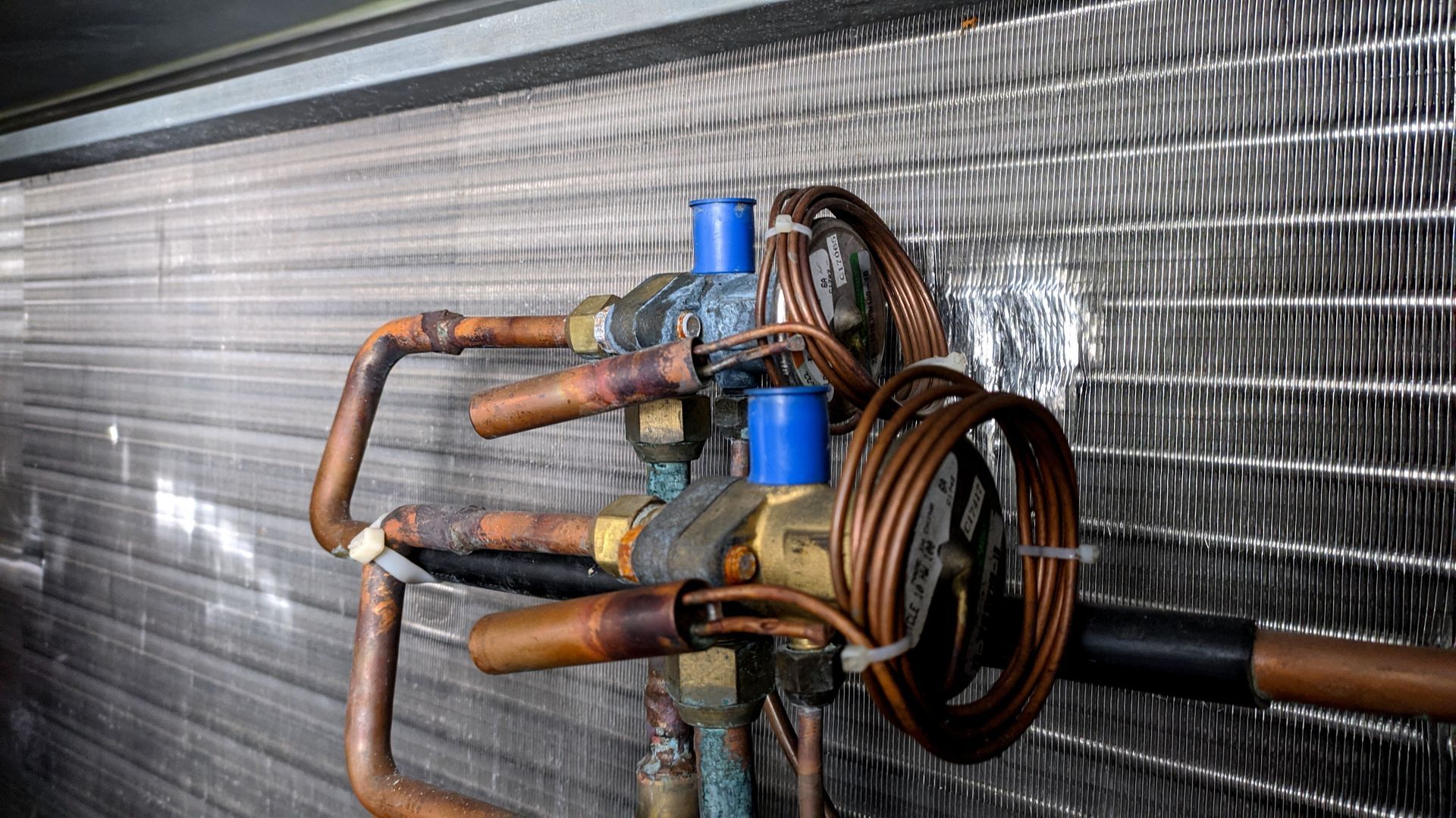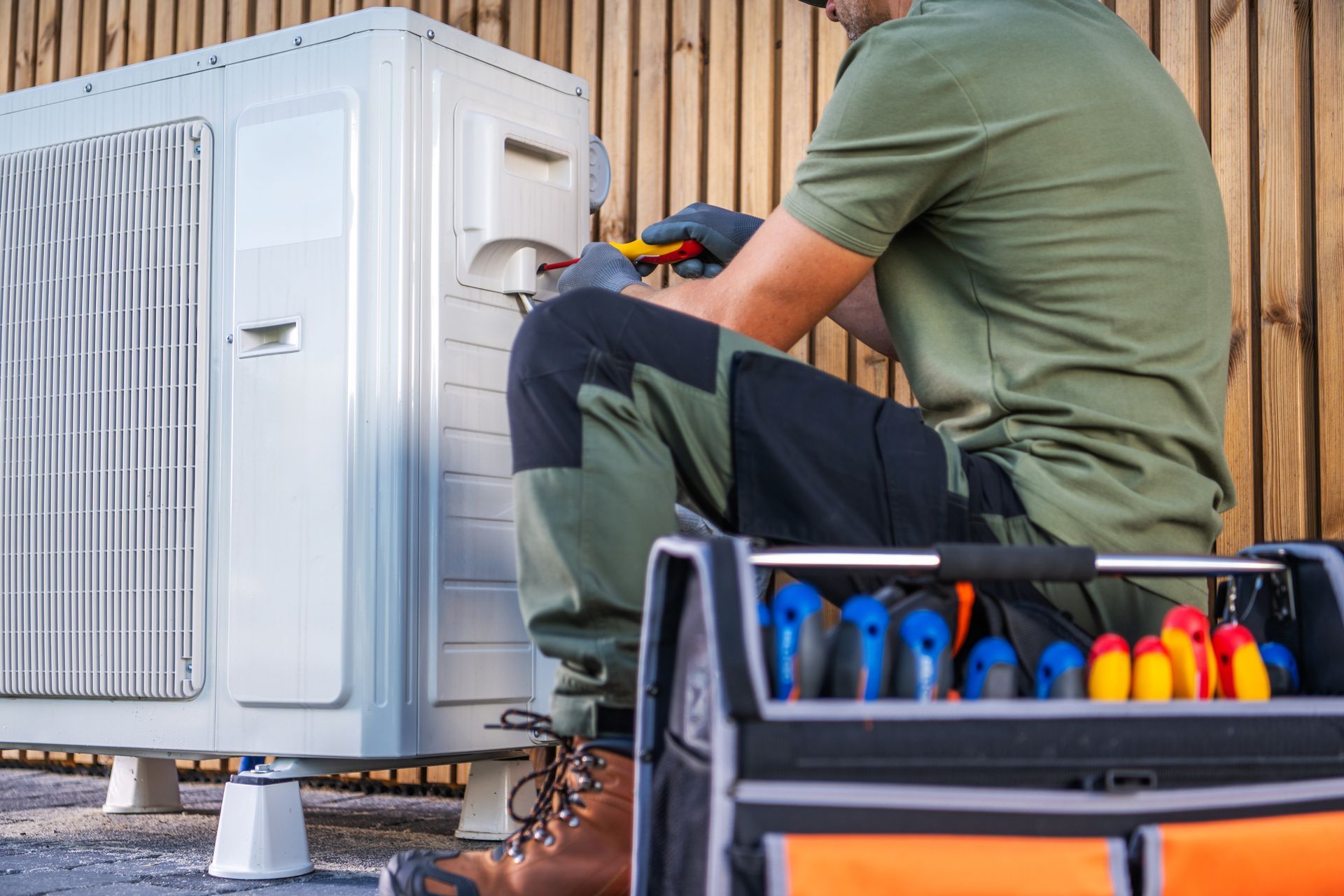Serving Residents of Tarrant County for Over 60 Years
Call the On-Time, Honest HVAC Experts | Available 24/7 for Emergency Services
How Important Are Thermal Expansion Valves (TXVs) to the Performance of My HVAC System?

Having cool air during the summer in Texas isn’t a luxury – it’s a necessity. When the temperature starts to get into the nineties and hundreds, you need your HVAC unit to perform optimally and deliver maximum cool air. While your system’s refrigerant is essential for providing that necessary cold air, the ability of the refrigerant to vaporize without floodback is all thanks to the thermal expansion valve (TXV).
What Is a Thermal Expansion Valve?
The TXV is a metering device that regulates the rate at which refrigerant liquid flows into the evaporator coil. In essence, the TXV’s job is to maintain your HVAC unit’s main value, known as “superheat”. Superheat is the difference between the HVAC unit’s actual temperature and the temperature at which the refrigerant liquid becomes a vapor – otherwise known as the saturation temperature.
Your unit’s TXV manages the amount of boiling liquid that flows into the evaporator. If it’s too much, you’ll have low superheat, which means that liquid in the evaporator coil won’t vaporize. It will instead linger and cause damage to the system. On the other hand, if too little liquid flows in, it creates too much superheat, burning up too much liquid before it can flow through the evaporator coil, hindering your system’s effectiveness.
Regulating your HVAC unit’s high and low-pressure areas allows it to maintain a proper equilibrium, enabling your system to blow consistently cool air, even in the worst of Texas heat.
Does Every HVAC Unit Have a Thermal Expansion Valve?
No. Some older HVAC units may have a different operating valve, such as an automatic expansion valve (AXV), float valve or pilot-operated expansion valve (POE). AXVs maintain a constant pressure on the evacuator coil, float valves hold a consistent level of liquid in the receiver and POEs use an external device to monitor the flow of refrigerant liquid. While these can be useful in certain cases, most homeowners get better performance via thermal expansion valves due to their precision in regulating refrigerant flow.
Signs Your Thermal Expansion Valve Needs to be Repaired or Replaced
Eventually, your TXV will break, especially if your HVAC unit is old or in poor working condition. If your unit continually sends too little liquid into the evaporator, generating insufficient superheat, you can wear down your TXV.
Unfortunately, the average homeowner will have no idea whether or not their TXV is failing. If you notice system performance issues, you should contact an experienced HVAC technician to diagnose the problem. If the TXV is failing, they can replace it before the broken or faulty component harms the overall unit, necessitating more expensive repairs or replacement.
You should consider calling Tom’s Mechanical Inc. if:
- Your HVAC unit isn’t providing sufficient cooling or heating
- Your home has inconsistent temperatures in different areas
- Your home’s air feels stagnant
- You hear hissing or bubbling sounds from the unit
- Your unit randomly shuts off for a few hours
- The unit is leaking
If Your Thermal Expansion Valve Needs to be Replaced, Do You Need to Replace Your Refrigerant or Evaporator Coil Too?
Not necessarily, although it may not be a bad idea. If your refrigerant is low or the evaporator coil is damaged, your HVAC unit still won’t be able to operate efficiently even after fixing the TXV. Our HVAC technicians will thoroughly assess your unit and create a strategy to promptly address the issues and get the unit working properly again while making your schedule and budget a priority. If replacing the unit would be more cost-effective than trying to repair i, we’ll let you know.
Ask Our Arlington HVAC Repair Experts About Your Unit and Get a Free HVAC Replacement Quote
The experienced technicians at Tom’s Mechanical Inc. have been helping residents get the most out of their HVAC units since 1960. We’ll repair or replace your HVAC system quickly with minimal disruptions so you can have your house back to normal as soon as possible.
We’re always on standby to provide 24/7 emergency HVAC services so you and your family can stay protected against the intense Texas sun. Reach us today by calling (817) 277-4493 or explore our HVAC services page to learn more.
OTHER RECENT POSTS
REQUEST YOUR SERVICE WITH TOM'S MECHANICAL, INC.
For 24/7 emergencies, call us at (817) 277-4493 today!
Our Web Form Is Not For Emergencies
WE'RE A CUT ABOVE THE REST
Over 60 Years of HVAC Solutions
You Deserve To Be Comfortable In Your Own Home
Delivering the Highest Quality of Service
Serving Arlington, Southlake, Grapevine and Keller
Available 24/7 for Emergency Services
Quick Links



